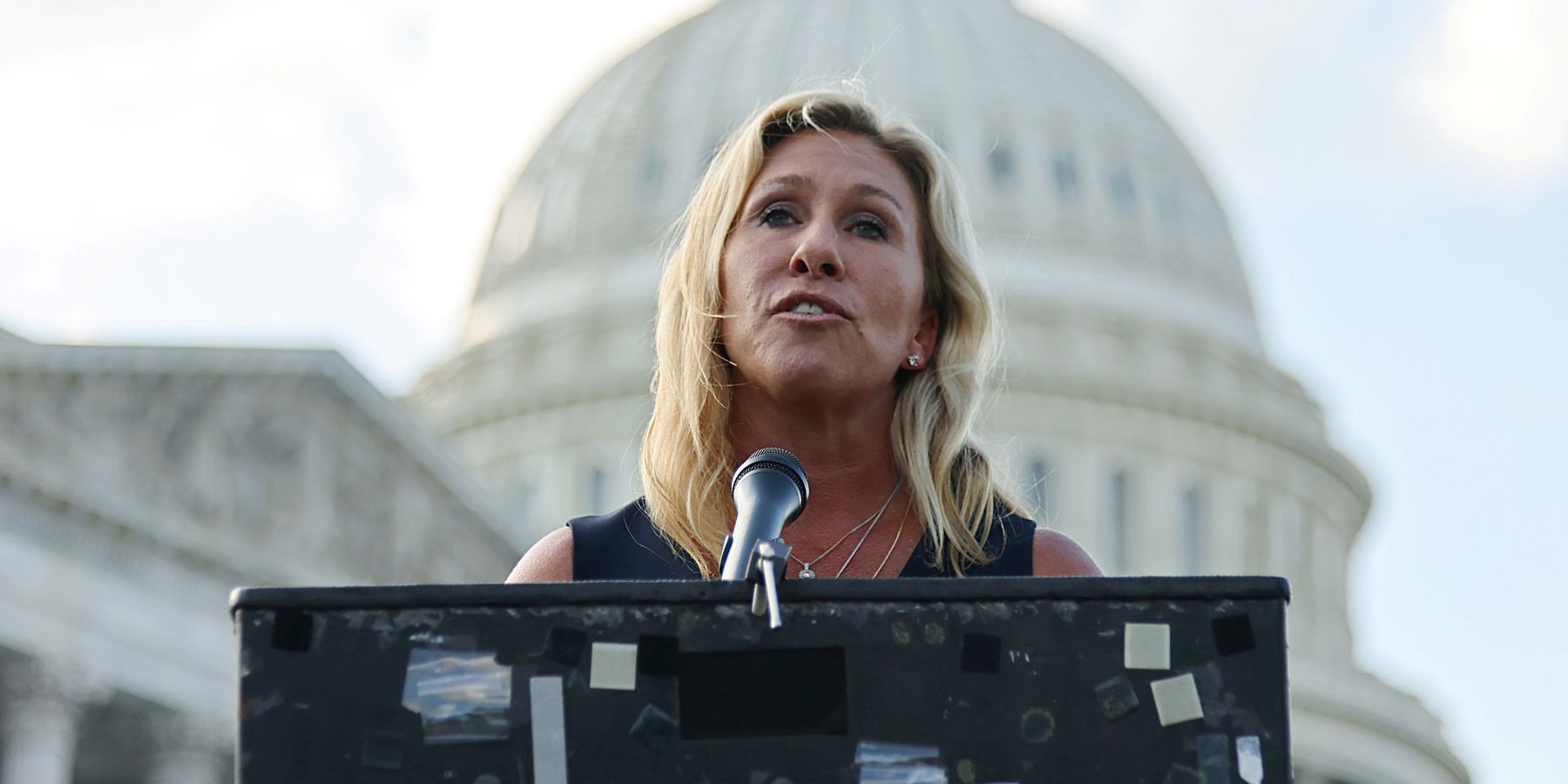UPDATE 7/18 9:20 AM: The House of Representatives overwhelmingly rejected Greene's amendment for the 2026 Department of Defense Appropriations Act, which would have blocked $500 million in additional military aid to Israel. The votes were 6-422 against the measure.
As Israel’s war on Gaza slogs on, Rep. Marjorie Taylor Greene (R- Ga.) wants to cut U.S. military aid to Tel Aviv.
Indeed, Greene submitted an amendment to the 2026 Department of Defense Appropriations Act, which provides annual funding for DoD operations, that would strike $500 million in proposed additional military assistance for Israel.
“Nuclear armed Israel’s national debt is under $400 Billion compared to our crippling national debt of $37 TRILLION,” Greene explained on X. “Nuclear armed Israel seems to have their defense and debt under control, so the American taxpayers should not be required to give Nuclear armed Israel another $500 million in our U.S. defense bill.”
Greene told Steve Bannon’s War Room podcast that the U.S. already gives Israel billions each year for its defense systems. “This is not a helpless country, and we already give them $3.4 billion every single year in the state — from the State Department. $3.4 billion every single year,” she said. “They don’t need another $500 million in our defense budget.”
Greene’s amendment would repeal section 8067 of the 2026 Department of Defense Appropriations Act, which would provide $500 million to Israeli cooperative programs — at the heart of Israel’s aerial defense operations.
Of the proposed $500 million in aid Greene wants to block, $60 million would go toward Israel’s Iron Dome air-based defense system. Additional funds intended for Israel’s ballistic missile defenses and missile defense architecture are also on the chopping block.
Greene’s amendment to target additional military aid to Israel follows Israel’s so-called “twelve day” war on Iran, where the U.S. struck Iran in an effort to target its nuclear facilities. Greene has spoken against U.S. involvement in that conflict.
And the amendment comes amid ongoing negotiations between the Trump administration and the Israeli government regarding Gaza, where Israel has killed at least 57,000 Palestinians since October 7, 2023. Special Envoy Steve Witkoff suggested a 60 day ceasefire in Gaza could come by the end of this week, but that has not materialized.
Notably, Greene told Steve Bannon Wednesday that “it’s important to say nuclear-armed Israel, because they do have nuclear weapons.” Israel is indeed widely understood to have nuclear weapons, though Israel nor the U.S. acknowledge their existence and American politicians rarely discuss them. Israel is not a party to the Non-Proliferation Treaty.
The House Committee on Rules will consider the Department of Defense Appropriations Act with Greene’s amendment on July 14.
- MAGA influencers want an Iran deal and for hawks to shut up ›
- The Capitol Hill Republicans against US war with Iran ›
- AOC wrong: More civilians die when we send Israel 'defensive weapons' | Responsible Statecraft ›
- How MTG became MAGA's moral compass on Gaza | Responsible Statecraft ›
- Marjorie Taylor Greene to resign: 'I refuse to be a battered wife' | Responsible Statecraft ›
















